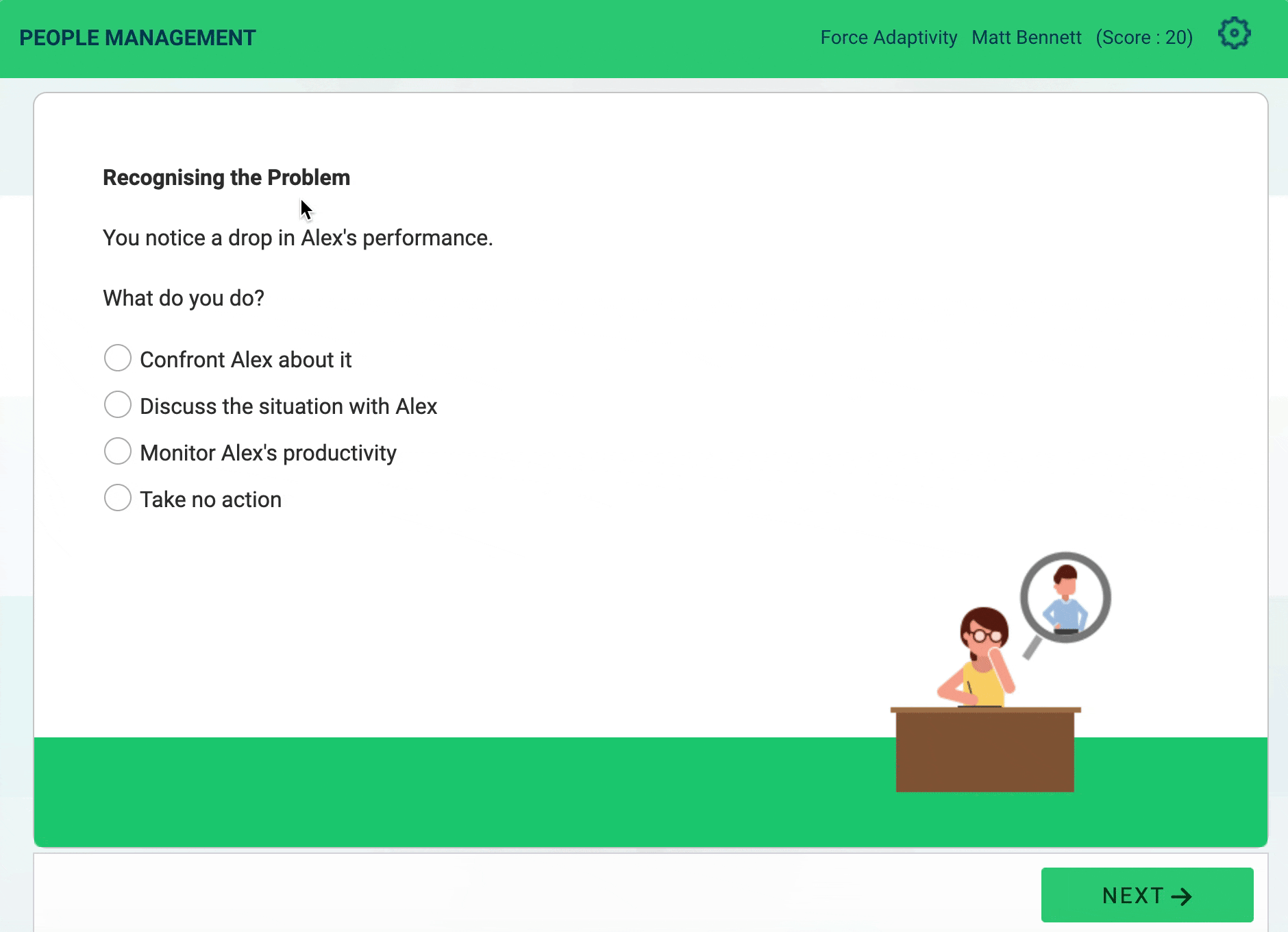As a university student in the late 2000s/2010s, and later as a teacher, I’ve had frustrating experiences on both sides of the screen when it comes to online learning. Despite seeing the growth and potential of online learning, most of my early experiences were disappointing when compared to my experience with the technology of video games, my iPhone, and more. As much as I wanted to believe in digital learning, it never lived up to my expectations.
‘But Matt, you work at an edtech company!’
This is true. It hasn’t been until recently that I’ve started to see online learning design address the many issues I faced as a student and an instructor. Let me tell you more about those experiences, and how I started to overcome the limitations that almost turned me off of digital learning for good.
In front of the LMS: My experience as a Learner
The first completely online program I took at university was a Diploma in Russian, as none of the universities close by taught the language. My interest in foreign languages and my Russian science instructor sparked my interest in the Russian culture enough for me to want to learn it.Before starting the course, I had very little experience with Russian, and considered myself a complete beginner. The course required students to reach C1, an advanced level in the language by its conclusion. I was motivated and believed the course would get me there. With my high expectations of online learning (way higher than I should have), I imagined lessons where I would be placed in a virtual world, having conversations with others or with virtual characters, and choosing the correct lines to say.
As you might expect, the online learning experience wasn’t what I imagined. While I’m sure the teachers were great in real life classrooms, the experience I had was challenging to say the least. Each week pages were placed on the LMS (Learning Management System) with a list of vocabulary and grammar to learn, along with a voice recording to download of the instructor reading the words and exercises. It was information overload, and I didn’t know what to do with it all.
In addition to the unengaging learning design, the visual design of the LMS was boring and uninspired. The design reminded me of a type of apartment block widespread in Russia, known as Khrushchyovka (named after Nikita Khrushchev); cheap and ugly, somewhat functional, and good enough to solve the housing crisis at the time.
A comparison between a Khrushchyovka apartment block and an LMS
While it gave me all the information I needed, it wasn’t engaging or user friendly - it lacked the “wow factor” that I had begun to expect from my interactions with tech.
Without a heavy dose of self-motivation, I would have struggled to continue on with my course. Apart from the dull design, I missed many aspects of face-to-face education: immediate feedback on the exercises (instead of sending them by email to instructors, to get them checked 2 weeks later - I ended up asking a Russian friend to help instead!), opportunities to practice my speech, and inspiration from passionate teachers.
In spite of these pedagogical and design setbacks, I (ostensibly) managed to learn the majority of the grammar taught in the course. I subsequently decided to visit Russia and was confident I’d be able to communicate in the language (well enough!). To my surprise, when I arrived, I couldn’t understand what people were saying, and no one could understand me! I ended up using sign language during my entire trip.
The fact that I was unable to speak or understand the language during my Russia trip, (almost) defeated the purpose of me taking the online course in the first place!
Behind the LMS: My experience as a Teacher
As a teacher, I faced new limitations of the LMS. As I started to teach online I began to understand why all my previous experiences in learning online didn’t live up to my expectations.
I was teaching English as a Second Language (ESL) to biology students and had envisioned creating lessons where my learners could be placed in life-like situations. I wanted to incorporate videos, and provide immediate feedback to their answers to the questions presented! I managed to achieve parts of this vision using our LMS, to show videos along with questions (although, without that immediate feedback I wanted to include), but it was time consuming, wasn’t a seamless experience, and not very successful with my students.
I was also keen on using virtual lab simulations in my lessons but they proved to be a cumbersome experience for both my learners and myself. I had no way to combine the virtual lab with questions and feedback based on learner choices into a single learning experience.
Overall, the LMS I used at my institution was a good place to store content centrally and upload assignments. However, with the tools provided to me, there was no simple way for me to create a visually appealing sequence of content. More importantly, content with which my students could interact in different ways - answer questions, and receive immediate, meaningful feedback (more than just “correct” or “incorrect”) on the choices they made.
After hours of work and multiple attempts to improve the online components of courses I taught, I gave up trying to develop complicated material. It was simply too difficult and time consuming to customise the online content in the way I wanted, for the gain I felt my students would get out of it. I decided to use the LMS for simple things (quizzes/pre-reading/etc.), and let go of my vision of amazing, well-designed online lessons.
The Present
The whole time I was teaching, this shortcoming of technology irked me. Ultimately I left the classroom and decided to pursue a career in education in a different way - by joining an edtech startup promising better digital learning design, and a tool to do this with.
Leaving the classroom and joining a startup, Smart Sparrow, required some changes in the way I worked. However, I was very relieved to find similarities in the learner-centred design process at Smart Sparrow and the learner-centred pedagogies I used while teaching. Of course, during my early days, I had to learn to use the tool. I won’t lie, it was a little challenging (like anything you try for the first time), but I’m now in a position where I can make those life-like scenarios I had wanted for my ESL class!

Being part of Smart Sparrow’s Learning Design team means I have a say in the future of learning design. The design choices I make influence the functionality, features and direction of our technology which may impact hundreds of educators. I hope this piece encourages you to see the potential of online learning and make the most of what it has to offer. As for me, I will continue on to contribute to this industry as I am hopeless optimist for education technology!
PS: Keep an eye out for aero, Smart Sparrow’s Courseware Development Platform, that has been influenced by many of our frustrations with the LMS, like the ones I’ve shared in this post.


